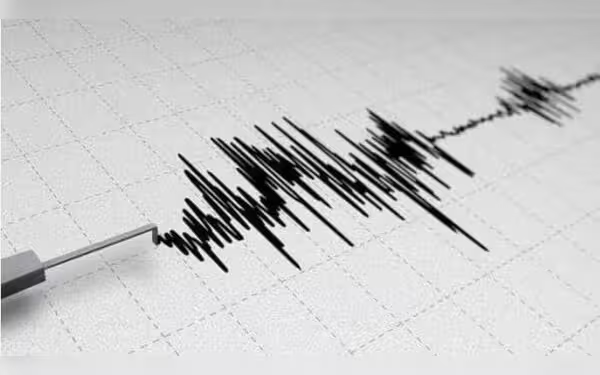Saturday, November 16, 2024 09:24 PM
Mild Earthquake Hits Rohtak, Haryana
- 3.0 magnitude earthquake struck Rohtak, Haryana.
- No casualties or damage reported from the tremor.
- Recent seismic activity noted in Gujarat and Jharkhand.
 Image Credits: menafn
Image Credits: menafnA 3.0 magnitude earthquake jolted Rohtak, Haryana, on November 12, 2024, with no reported casualties or damage.
On November 12, 2024, a mild earthquake measuring 3.0 on the Richter scale jolted Rohtak, Haryana, at precisely 07:50 am. The tremor struck at a depth of 7 kilometers, with its geographical coordinates pinpointed at latitude 28.75 N and longitude 76.78 E. Earthquakes, while often alarming, are a natural phenomenon that can occur anywhere in the world, including regions not typically known for seismic activity.
This recent quake follows a series of seismic events in India, including a 3.4 magnitude tremor that was recorded in Gujarat's Kutch district just days earlier, on November 3. The Institute of Seismological Research (ISR) reported that this tremor occurred at 3:58 am, with its epicenter located 53 kilometers north-northeast of Lakhpat. Fortunately, no casualties or property damage were reported in either incident, which is a relief for the affected communities.
In the past, Gujarat has experienced significant seismic activity, with nine major earthquakes recorded over the last 200 years. The most devastating of these was the 2001 Kutch earthquake, which registered a magnitude of 6.9. This catastrophic event resulted in nearly 13,800 fatalities and left approximately 167,000 individuals injured. Such historical context underscores the importance of preparedness and awareness regarding earthquakes, especially in regions prone to seismic activity.
Additionally, on November 2, another earthquake measuring 3.6 struck parts of Jharkhand, with its epicenter located in Khunti district, about 35 kilometers from the state capital, Ranchi. Like the previous tremors, there were no immediate reports of casualties or damage, which is a fortunate outcome for the residents.
Understanding earthquakes and their potential impact is crucial for communities, especially in areas with a history of seismic activity. While the recent tremors in Haryana and Gujarat were relatively minor, they serve as a reminder of the earth's dynamic nature. It is essential for individuals and families to be prepared and informed about safety measures in the event of a more significant earthquake. Knowledge is power, and being aware of what to do during an earthquake can save lives.













